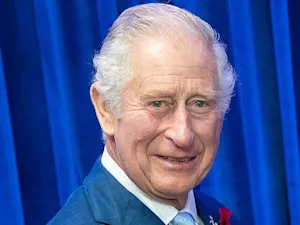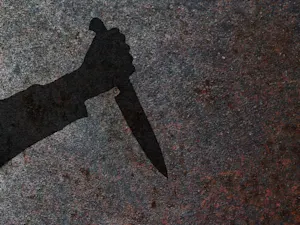
How DNA Exposed a Serial Killer After 45 Years of Mystery
Bruce Lindahl's story reads like a script from a chilling true-crime documentary, but his victims' suffering was all too real. Lindahl, a suspected serial killer who terrorized Chicago's suburbs in the late 1970s, eluded justice in life and left a trail of devastation in his wake. Now, decades after his gruesome death, modern DNA technology is revealing the full extent of his crimes — and finally giving families the answers they've been seeking for more than 40 years. Among them is the case of 19-year-old Kathy Halle, a young woman whose disappearance and murder in 1979 remained unsolved until now.
Who was Bruce Lindahl, and why is his name resurfacing after 40 years?
Bruce Lindahl lived a double life as a charming, friendly neighbor and a predator lurking in plain sight. During the late 1970s, he targeted young women in the western suburbs of Chicago, luring them into situations they couldn't escape. Authorities now suspect he killed at least a dozen women and girls, along with committing countless assaults. His crimes only stopped because of his own fatal mistake. In 1981, while stabbing 18-year-old Charles Huber to death, Lindahl accidentally severed an artery in his own leg and bled out in the Naperville apartment where both bodies were found.
Though Lindahl escaped justice in life, his death left behind clues. Investigators later exhumed his body to retrieve DNA, which has since cracked open cold cases, including the murder of Kathy Halle.
What happened to Kathy Halle, and how did her case finally get solved?
On March 29, 1979, Kathy Halle left her North Aurora apartment to pick up her sister at a nearby shopping center.
She never arrived.
Nearly a month later, a boy fishing in the Fox River discovered her body near the I-88 bridge. Investigators believed her killer abducted her in her apartment complex parking lot and left her body in the river after taking her life. Despite their efforts, the case went cold.
In 2024, DNA evidence finally identified Lindahl as Halle's killer. Investigators tested DNA found on Halle's clothing against Lindahl's genetic profile, confirming his involvement. Kane County State's Attorney Jamie Mosser said the evidence was strong enough to charge Lindahl with first-degree murder if he were alive today. Although no trial can take place, the discovery brought long-awaited answers to Halle's grieving family.
How does Lindahl connect to other unsolved murders?
Lindahl's DNA first cracked another cold case in 2020, linking him to the 1976 murder of 16-year-old Pamela Maurer. Maurer had been strangled and sexually assaulted, her body left on a roadside in Lisle. Investigators believe Lindahl's violent spree didn't stop there. In one haunting example, Debra Colliander escaped Lindahl after he kidnapped and raped her in 1980. She bravely prepared to testify against him, but days before the trial, she vanished. In 1982, her remains were found buried in a shallow grave. Authorities couldn't prosecute Lindahl, as he had already died, but they strongly suspect his involvement.
Now, investigators believe Lindahl may have killed at least a dozen victims, and DNA continues to connect him to unsolved cases.
Did anyone survive Lindahl's attacks?
One woman, Annette Lazar, lived to tell her story. In 1979, Lindahl lured Lazar to his home with the promise of selling her marijuana. Instead, he held her at gunpoint and raped her. Lazar managed to escape and reported the crime, but no charges were filed. She now calls Lindahl a "monster" and avoids even saying his name, as CBS News reported: "When he put that gun to my head, all I could think was, 'I'm going to die.' By the grace of God, I didn't."
Lazar's survival serves as a reminder of the lives Lindahl destroyed and the few who managed to escape his grasp.
What role does DNA technology play in solving cold cases like this?
Advances in DNA testing have transformed how investigators tackle decades-old crimes. In Kathy Halle's case, forensic experts used next-generation sequencing to analyze minute traces of DNA on her clothing. These breakthroughs allow law enforcement to reopen cold cases and deliver long-overdue answers to victims' families. North Aurora Detective Ryan Post emphasized how critical it was to recover every trace of evidence, especially since Halle's body had been in the river for weeks.
For families like the Halles, closure comes not from a courtroom verdict but from knowing the truth. Halle's family released a statement thanking investigators for their persistence and expressing hope that other families might find similar answers through modern forensic science.
What legacy does Lindahl leave behind?
Bruce Lindahl represents the darkness that can hide in plain sight, preying on the vulnerable and leaving devastation in his wake. While his death prevented justice from catching up to him, his DNA has given his victims a voice decades later. Forensic technology ensures his crimes won't remain hidden, offering hope to families who have waited years for answers. Cases like Kathy Halle's remind us that justice, though delayed, is never entirely out of reach.
As investigators continue to examine Lindahl's connection to other unsolved murders, his name stands as a symbol of how modern science can illuminate the darkest chapters of the past. Families once left in limbo now have the chance to close the book on their loved ones' tragedies, proving that determination and innovation can triumph over time.
References: DNA Links Suspected Chicago-Area Serial Killer Who Died in 1981 to a Woman's 1979 Death | Suspected serial killer Bruce Lindahl linked to 1979 cold case out of North Aurora, Illinois
























